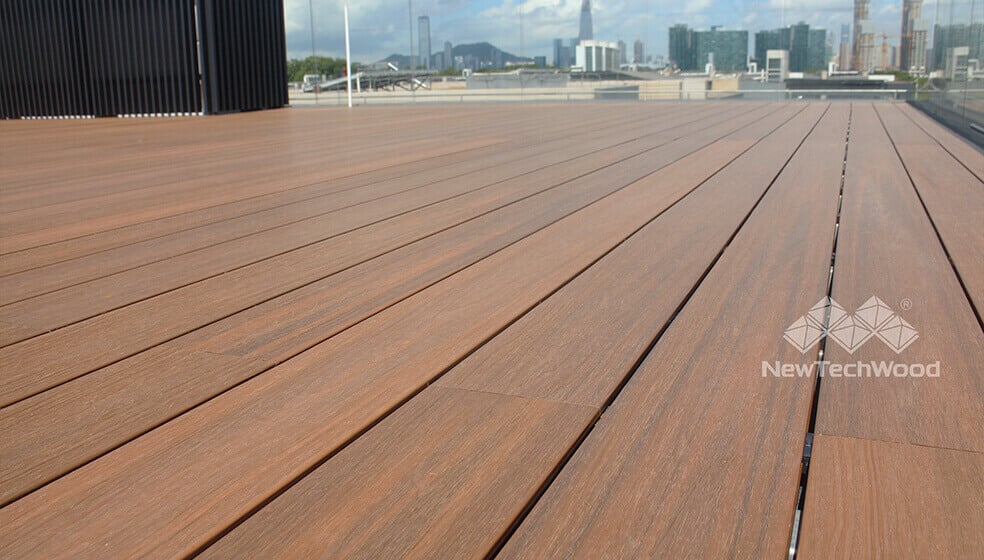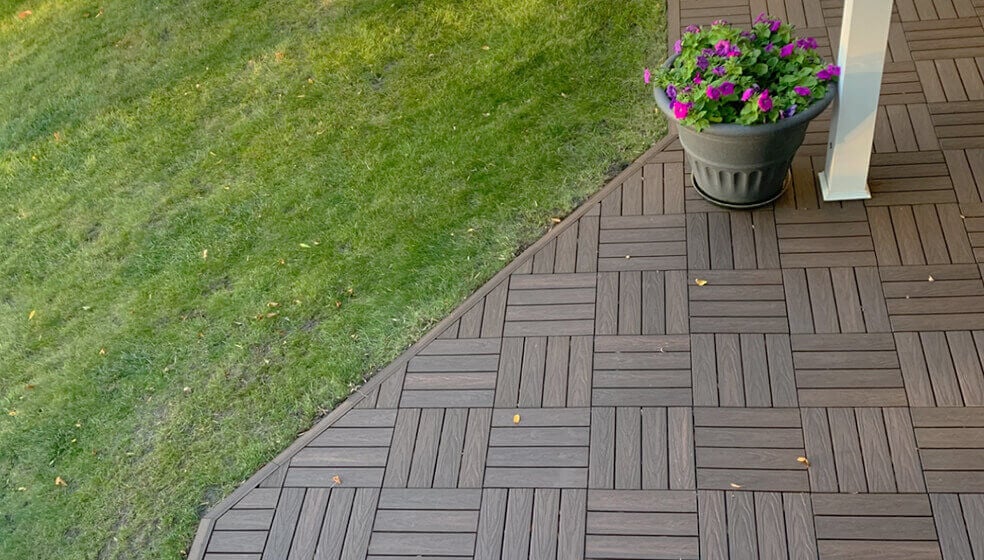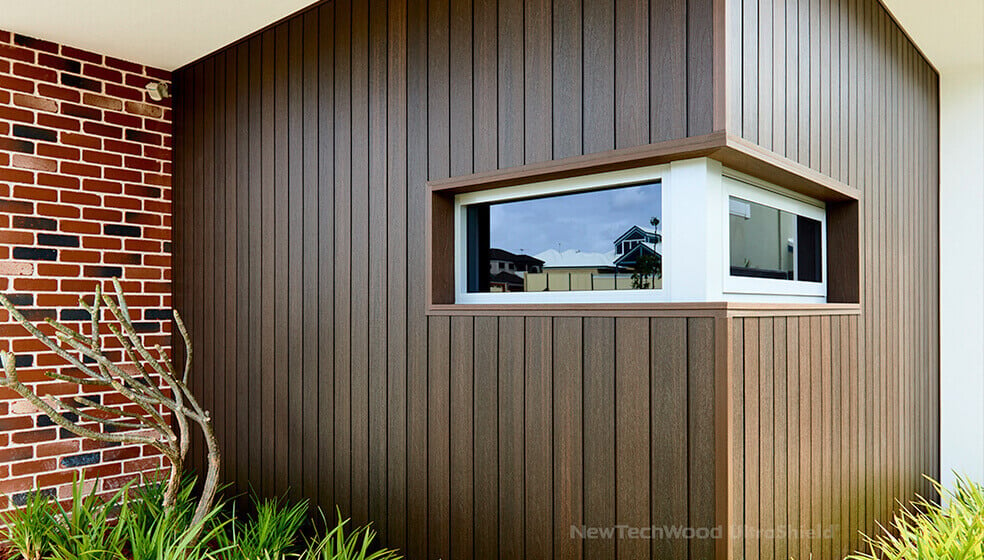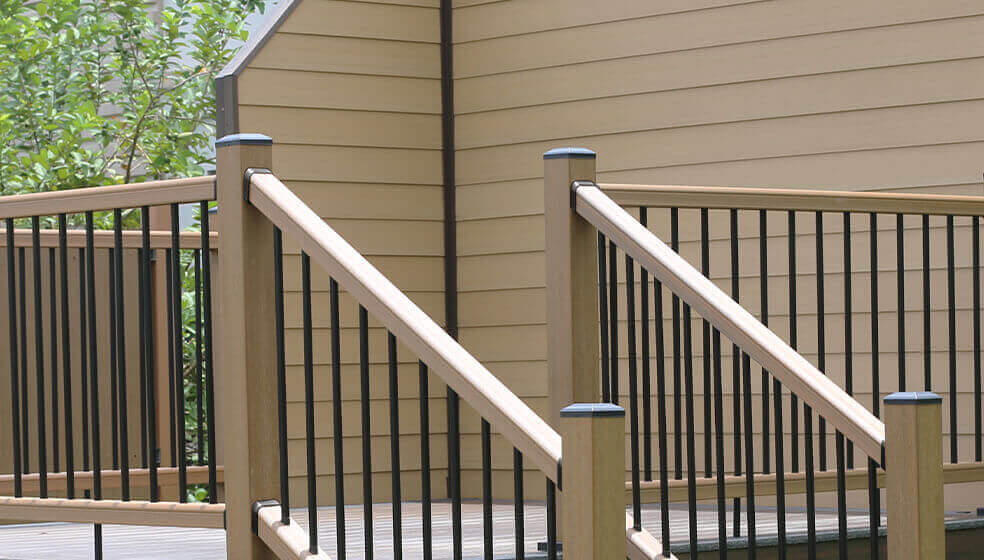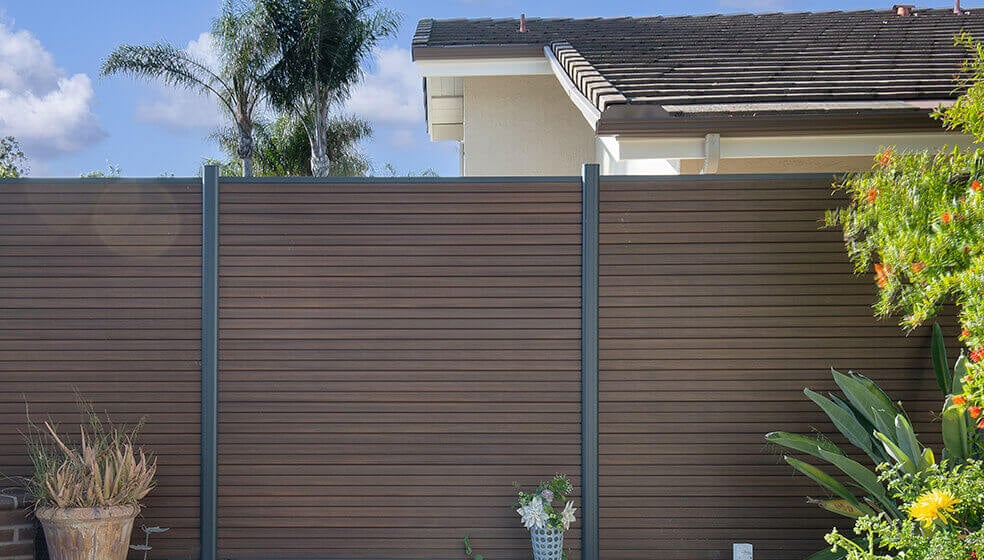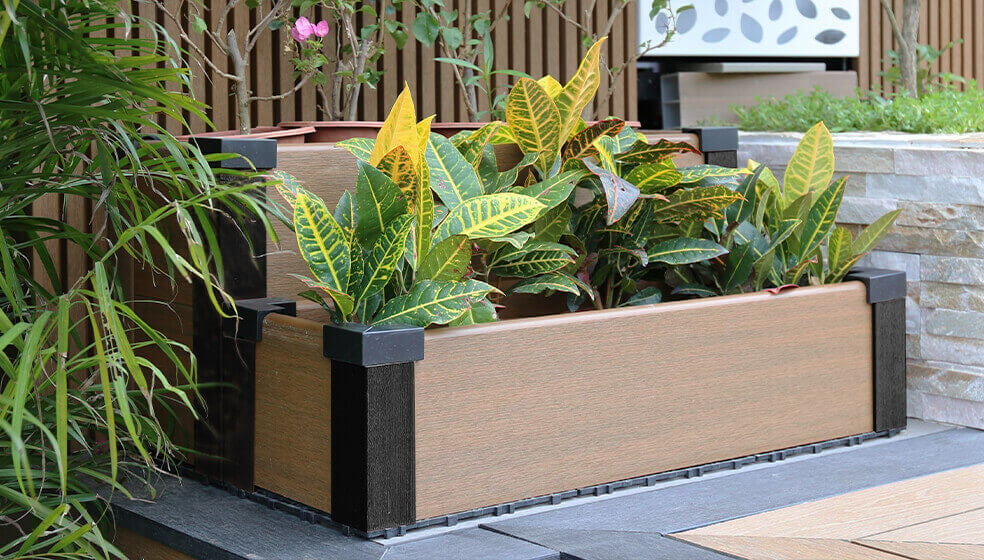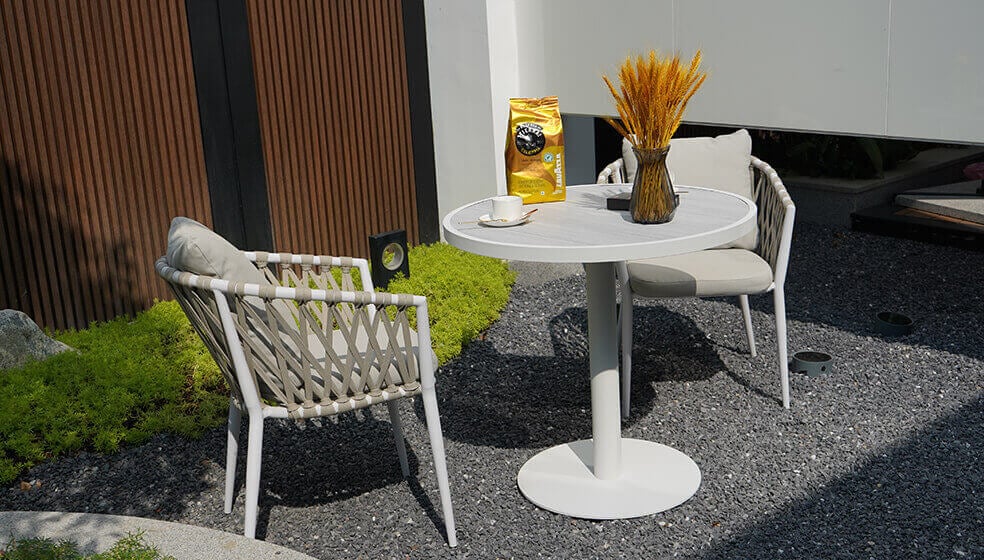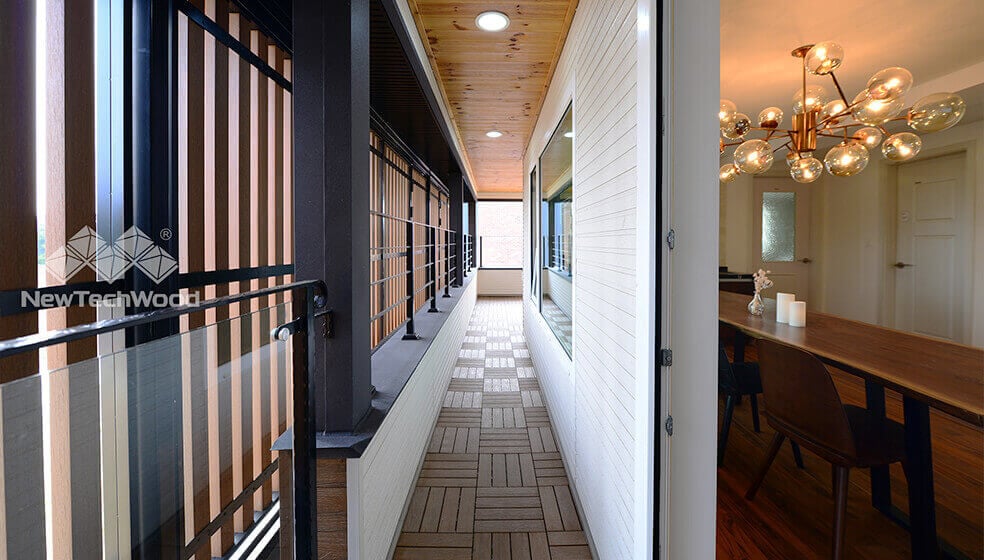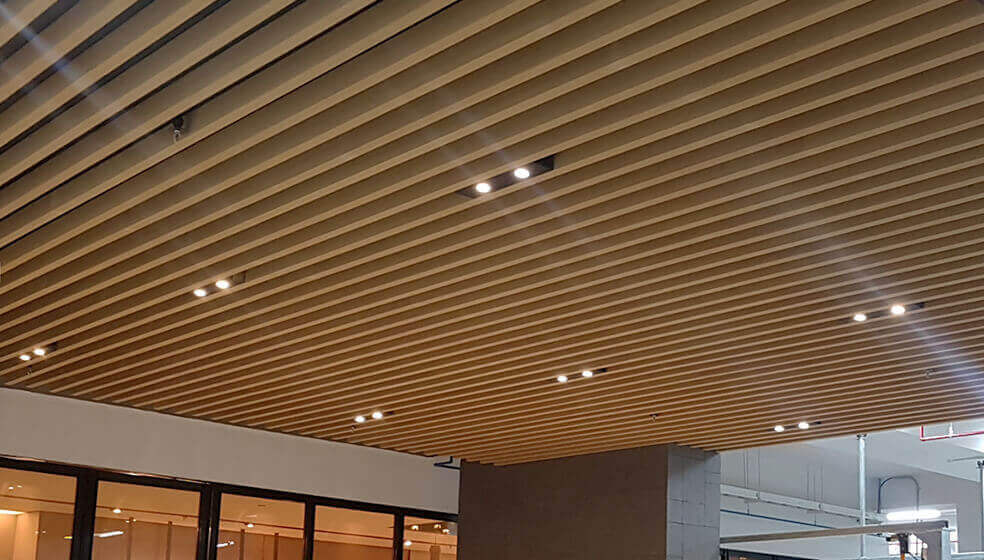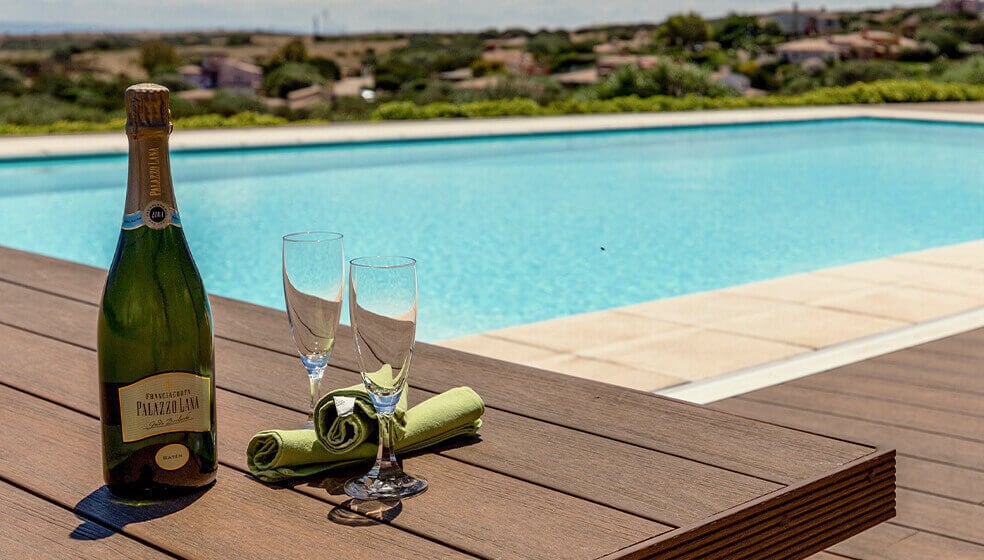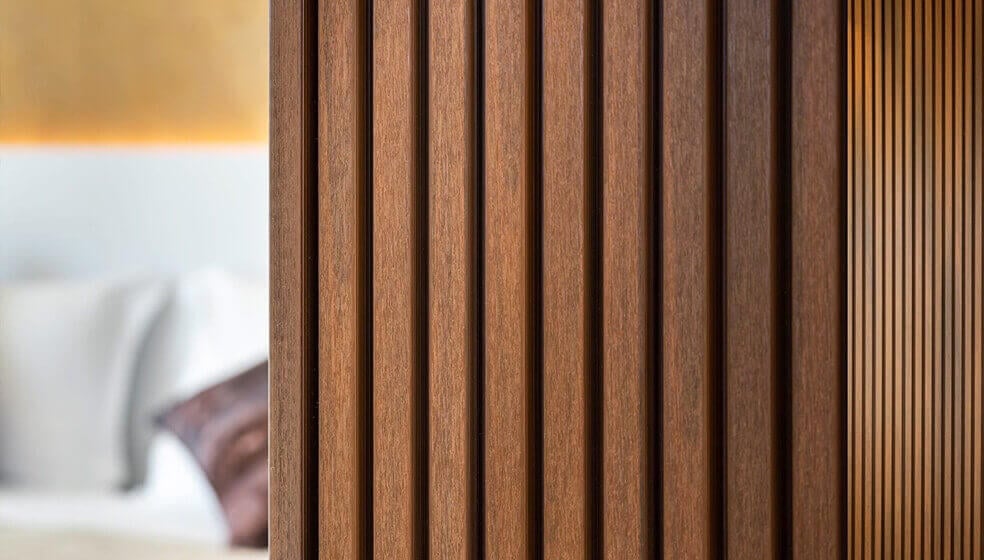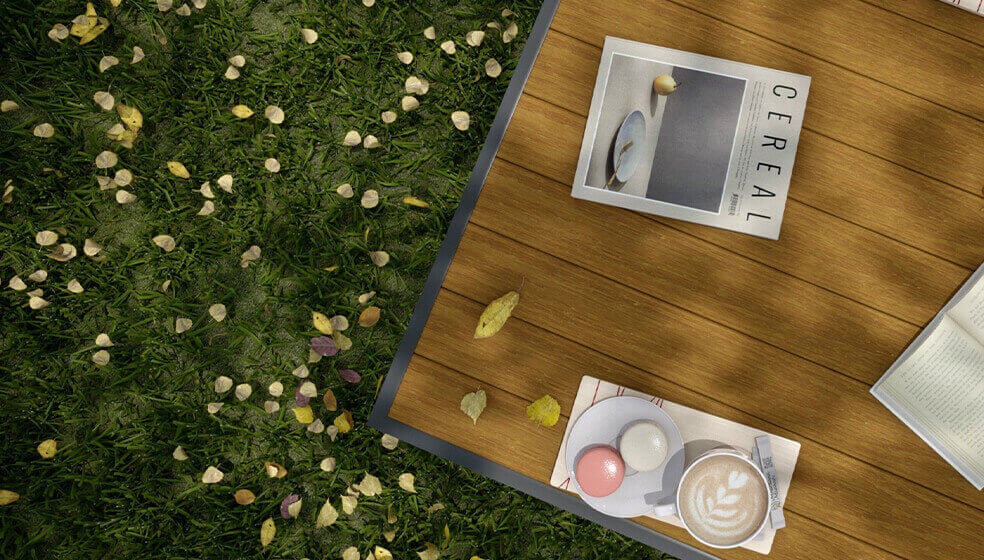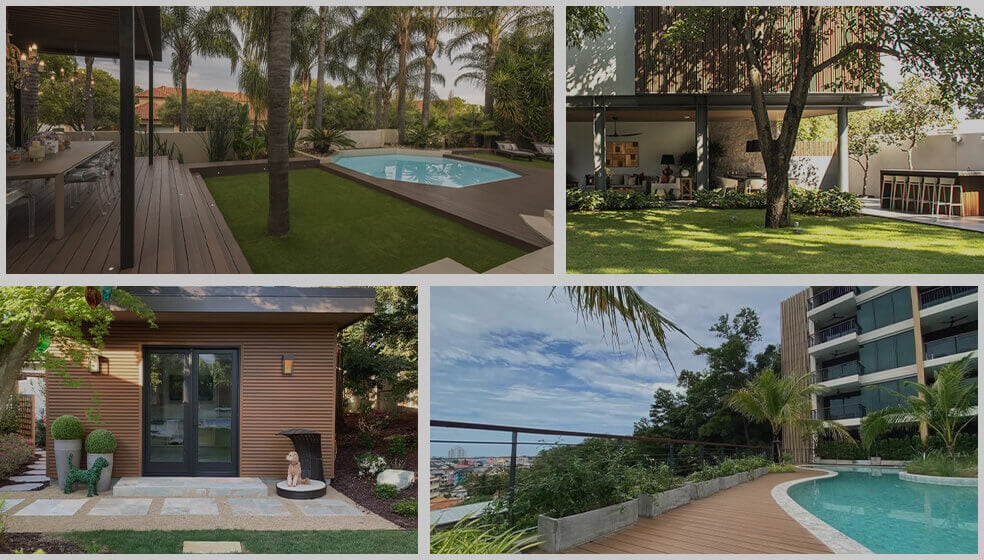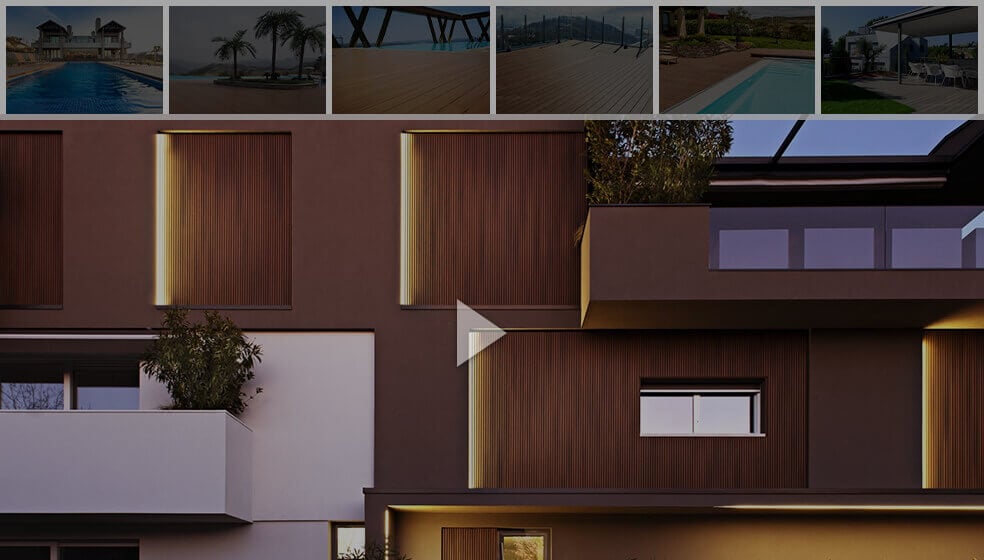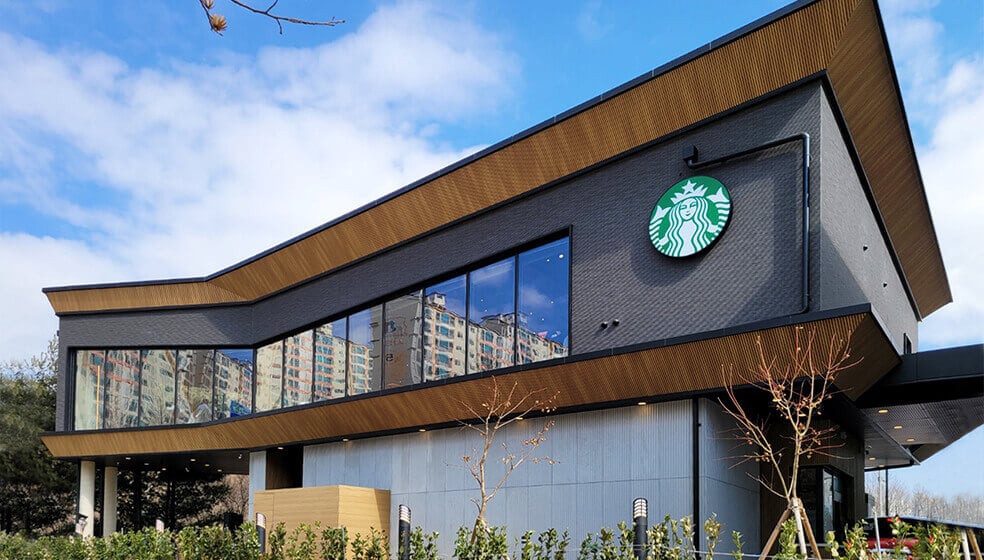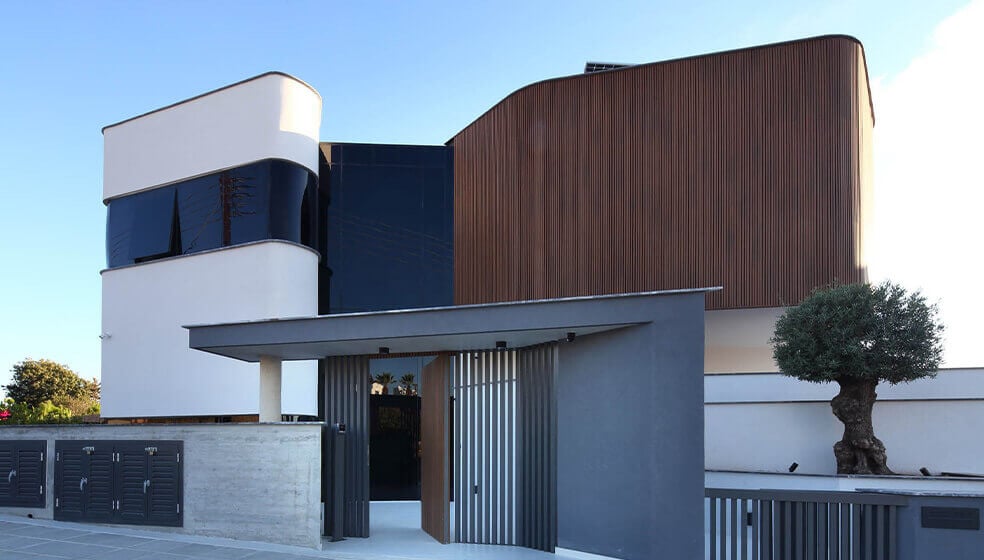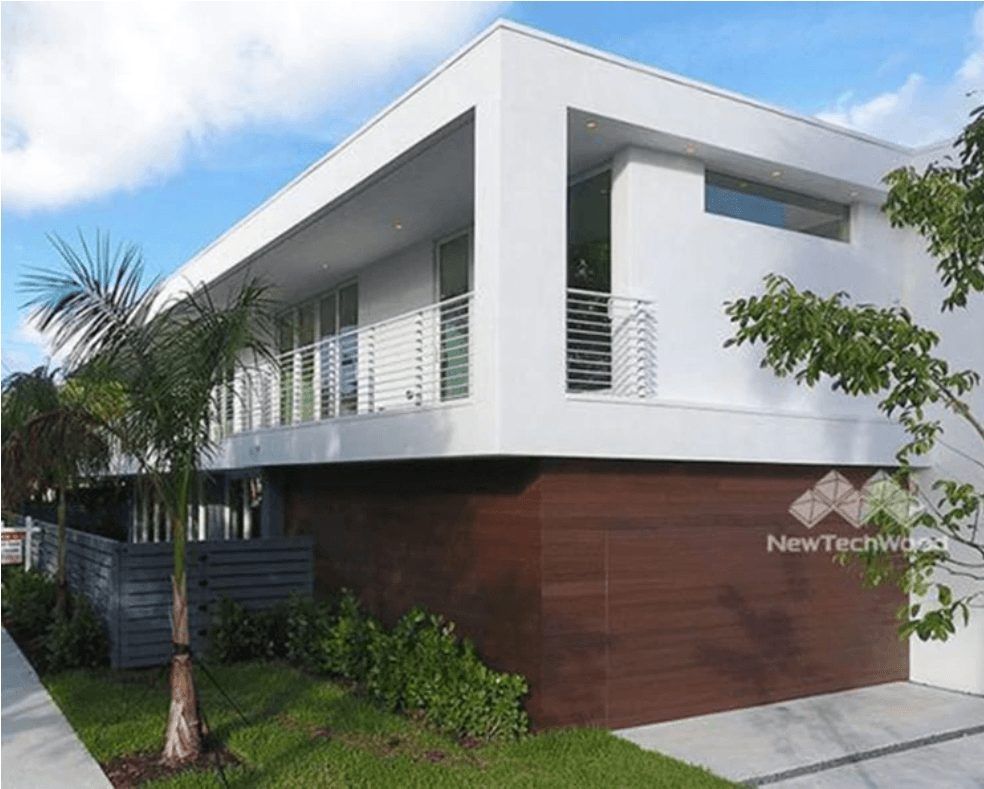
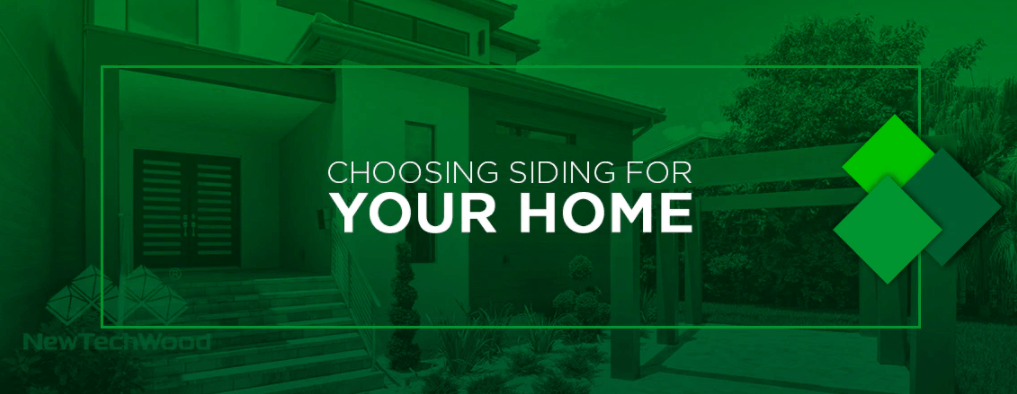
A home should be a secure place for you to start and end your day. Your home’s siding can protect you and your family from extreme temperatures and insects. The siding of a home can also have an appearance that sets it apart from the rest of the block. If you’re looking for new siding for your home, remember to choose a material that’s safe for you and your family. For your convenience, a home’s siding should be easy to maintain and reliable in case of harsh storms.
You could choose from a variety of materials, depending on their durability and affordability. What is the best siding material for a house? Imagine how you want your house to look. The right siding can make your dreams a reality. You want to choose a siding material that will enhance your curb appeal and make you proud of your property. Use this guide to determine how to choose siding material for your home.
What is siding?
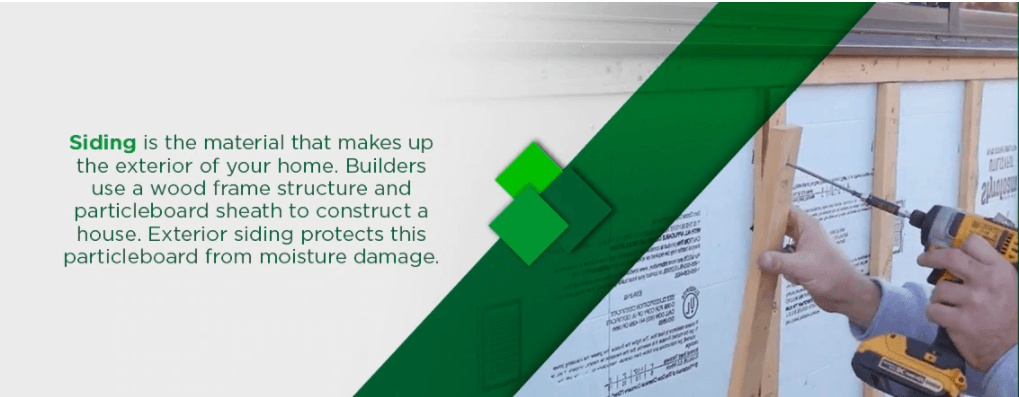
Siding is the material that makes up the exterior of your home. Builders use a wood frame structure and particleboard sheath to construct a house. Exterior siding protects this particleboard from moisture damage. You could also add insulation to your siding to provide a regulated temperature for your home. Choose a siding material that complements your decor theme, budget and surrounding climate.
1. The Benefits of Exterior Siding on a Home
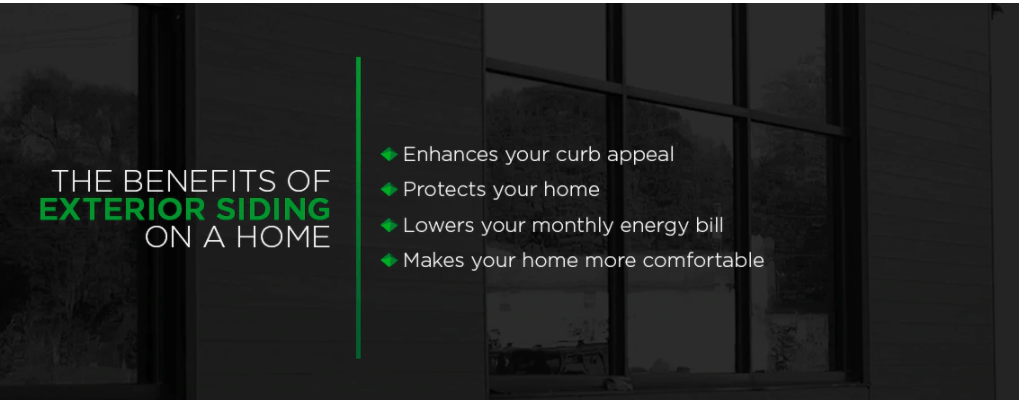
Replacing your exterior siding can increase your home’s property value because it:
- Enhances your curb appeal: Exterior siding is the first thing your guests see when they visit your house. It makes up the majority of your home’s exterior appearance. New siding will impress your neighbors and give you more pride over your living space. You will also need to maintain your exterior siding less often to achieve a modern, clean appearance.
- Protects your home: Siding guards your home against harsh weather conditions and extreme temperatures. Siding protects the inside of your home from wind, rain and snow. Siding can also keep dirt and insects outside. Installing your siding correctly ensures the ultimate protection.
- Lowers your monthly energy bill: New energy-efficient siding material can insulate your home from extreme temperatures. Insulated siding material keeps the air from your heater and air conditioner inside the home. If your HVAC system uses less energy to regulate your home’s temperature, you could save money on your energy bill each month.
- Makes your home more comfortable: With proper insulation, your home’s environment will be more comfortable. The outside of your home affects your indoor living environment. Insulation creates an air barrier that locks in the air warmed or cooled by your HVAC system. Insulated siding can keep warm air in during the winter and out during the summer.
2. When Should I Replace My Siding?
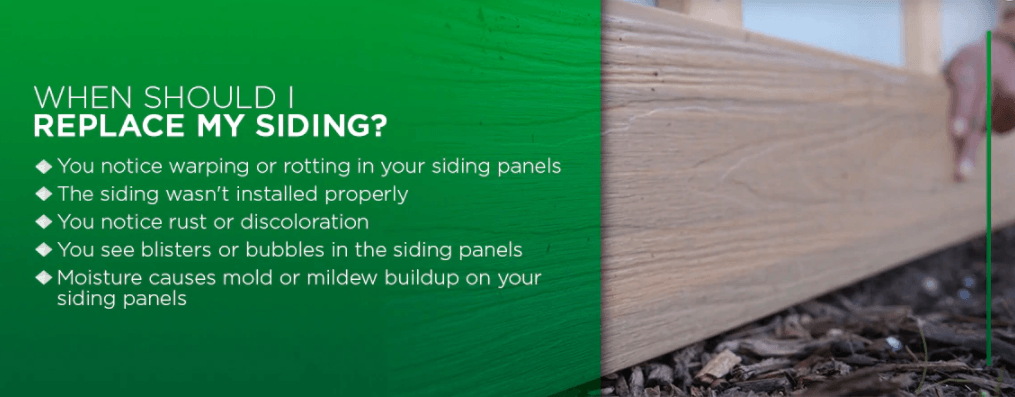
Replace your siding to maintain the integrity of your home. You would know if you need to replace your siding if:
- You notice warping or rotting in your siding panels: You should walk around your home and inspect your siding once every couple of months. Certain siding materials could rot when exposed to excess moisture. You could also see cracks in certain siding panel materials. Check your siding after a harsh storm or if you hear an object hit the side of your house. Replacing your siding maintains your home’s appearance and protects the interior structure.
- The siding wasn’t installed properly: Professional builders know the various siding materials require different methods of installation. Improper installation of your home’s siding could cause significant damage. Your siding wasn’t installed properly if you see nails or screws sticking out of your siding panels. You may also see worn out or wavy siding. Poor caulking would cause uneven siding panels.
- You notice rust or discoloration: Water damage could cause rusty nails or screws in your siding. Certain siding materials could also rust or discolor as a result of moisture damage.
- You see blisters or bubbles in the siding panels: Bubbles or blisters in the siding panels point to the presence of water under your siding. Moisture could ruin the integrity of your home’s sheathing. Siding is supposed to keep moisture and harsh temperatures outside of your home. Moisture inside your home means that your exterior siding isn’t doing its job. Mold and mildew could be signs of moisture infiltration in your home. Check your home’s interior walls for peeling or blistering paint for water damage also.
- Moisture causes mold or mildew buildup on your siding panels: Fungus usually feeds off any excess moisture or wet debris on your siding. The presence of fungus doesn’t always mean that you need to replace your siding. After you clean the fungus off your siding, check your panels for other signs of damage.
Fall is the best time to replace your siding. Certain siding materials could expand in the hot summer sun. The same materials could also contract in the cold temperatures of the winter. Spring’s excessive rain could delay your siding project and bring moisture into your home. Fall typically has moderate temperatures and less rain or snow. Some manufacturers drop their prices in the fall, after the peak summer season. Replacing your siding in the fall also gets your home ready for the cold winter season.
What are the different kinds of house siding?
If you’ve decided that now is the time to upgrade your exterior siding, you need to decide what material you want. The following exterior siding materials can be customized to fit your unique vision for your home.
Composite siding
Composite siding, like our Ultrashield All-Weather Siding System, is a more affordable alternative to natural wood. It’s made by combining fibers of recycled plastic and wood. Your home can have the appearance of natural wood without the maintenance required. Here are some of the reasons why composite siding would be a good fit for your home.
1. Ultimate Protection for Your Home
You want to invest in good-quality siding so that your home could be secure against harsh weather and extreme temperatures. Unlike natural wood, composite wood is resistant to moisture and rotting. It can withstand harsh weather conditions because of its many layers. High-quality composite wood includes a co-extruded cap, which makes this siding material impenetrable and prevents splitting. The core of composite wood contains recycled materials. It also creates little waste when manufactured.
2. Ease of Installation
The light weight of composite wood provides ease of transport and the ease of applying the panels to the home. Your composite wood siding is easy for builders to install on your home. Here is how to install wood composite siding on a building:
- Install aluminum or wooden joists at the bottom to prevent insects.
- Install the panels according to the manufacturer’s instructions.
- Screw clips into the bottom of the wall.
- Install wall cladding boards from the bottom up.
- Install gaskets at the top of the joists.
3. Choice of Colors and Materials
Composite wood comes in a variety of different composite siding options. While you can paint wood, you can request composite wood in the color of your choosing. The natural wood colors display the various types of wood species you could use to decorate the exterior of your home.
4. Green Technology
Wood composite made from recycled materials is eco-friendly. It’s also made from energy-efficient material that will save your home money. Your HVAC system will have to work less to provide a comfortable temperature for your family. One log of wood could make more composite wood panels than natural wood panels.
5. Durability
Composite wood exterior siding is a combination of toughness and longevity. This siding material is resistant to:
- Ultraviolet rays from the sun: Vinyl could lose its coloring due to extreme sunlight. Composite vinyl siding doesn’t have this problem.
- Stain damage: Wood can absorb moisture. You don’t have to worry about spills with your composite siding.
- Moisture damage: Composite wood uses interlocking panels and rain screens that block out moisture. Along with moisture protection, composite wood is also resistant to mold and fungus.
6. Low Maintenance
Since composite wood siding doesn’t stain or rot, you don’t have to do much to maintain it. Unlike regular wood panels, you don’t need to repaint or refinish composite wood. The color of composite wood will last. To clean your composite wood, all you need to do is rinse it with a mild detergent and garden hose.
7. Cost-Effectiveness
Composite wood siding costs about half the price of wood but doesn’t compromise on its look. It also doesn’t have the tough installation of other siding materials. Difficult installation tends to raise the price of siding materials. With the ease of installation, the cost of installation and maintenance should be much more affordable than other types of siding material.
Vinyl siding
Vinyl siding contains polyvinyl chloride (PVC), a plastic resin. You could choose from hundreds of different colors for your vinyl siding. Vinyl can also be insulated with polystyrene (EPS) to make your siding panels more energy-efficient. Vinyl is one of the top exterior siding materials because of its:
- Ease of maintenance: Vinyl siding only needs a few tools to install on your home. If you do the installation project yourself, make sure to follow the instructions from the manufacturer to save the most money. Mistakes in installation could be expensive. To maintain the appearance of your vinyl siding, wash it about once a year with mild soap and a garden hose.
- Cost-effectiveness: You could find the vinyl siding you want at an affordable price. Choose between insulated vinyl siding or standard vinyl siding depending on what fits in your budget.
You may choose to skip over vinyl siding because of its:
- Cheap plastic look: Even though vinyl comes in different colors and shapes, it can still have the cheap look of plastic. You could use a different material to design your home with a more natural or modern aesthetic.
- Vulnerability to sun damage: Ultraviolet (UV) rays could damage the coloring of vinyl paneling. Too much direct sunlight on the vinyl siding could cause the siding panels to warp or even melt. If you live in a dry, sunny climate, you might want to explore other options for your siding.
Wood siding
Wood is a popular siding material in various climates. Siding made from wood can ground you and make you feel secure. You could design the exterior of your home with clapboard or shingles. Clapboard uses horizontal panels of wood that has an upper overlapping piece. You also could use different types of wood as your siding material, such as redwood and cedar. For a more consistent appearance, use wood shingles for your home’s siding. Homeowners choose wood siding for their home because of its:
- Rich look: Wood siding has a natural look that other siding materials try to emulate. It’s available in different species. Redwood and cedar are popular options for wood siding because of their resistance to decay. Wooding siding could add a rich, natural appearance to your home, especially to a bungalow, Cape Cod or cottage. Wood can also be painted or finished in any color.
- Ease of installation: Wood panels, especially composite wood, is easy to install. It’s also readily available, so you can install it without searching all over for it. To install your wood paneling, make sure your surface is level and attach the wood panels to your surface with screws. Wood siding panels can also be easily replaced. You can switch out a rotted panel instead of replacing the whole siding.
- Eco-friendliness: Wood siding is made from all-natural biodegradable material. To have a “greener” home, you should invest in natural wood siding for your home. Composite wood siding is also made from recycled material to provide an eco-friendly living space.
Along with these benefits, wood siding also comes with its drawbacks, including:
- Regular maintenance: To maintain the appearance of wood siding, you have to chalk and paint it to prevent weather damage. Wood siding is also sensitive to fire damage. In a dry, sunny area, you might want a more non-flammable material for your siding. Some counties require homeowners to have more fire-resistant siding or to put an ignition-resistant finish on their solid wood siding.
- Susceptibility to rodent or insect infestation: Termites are famous for eating through wood. If you leave your wood siding without maintaining it, a colony of termites could eat through it. Other types of insects, such as ants and beetles, could also eat through your wood siding. Keep in mind that rats could chew through most siding materials, especially wood.
Wood composite, or engineered wood, siding contains a mixture of plastic and wood. It has all the benefits of the appearance of wood at a fraction of the price. Engineered wood weighs less than natural wood, making it easier to install. Composite wood is also resistant to insect infestation and other types of damage.
Brick siding
Brick siding is made from fired clay. It’s popular in historic home styles like Tudor, English cottages and Colonial. To bring down the cost of installation, brick siding is usually made of a brick veneer with mortar attaching the bricks to the home’s structure. Homeowners enjoy applying brick siding because of its:
- Beautiful, timeless appearance: Builders have been using brick for homes and commercial buildings for centuries. Since brick is made by molding different types of clay together, your brick will display various designs and colors.
- Eco-friendliness: Clay and shale are natural materials from the earth. They also absorb humidity and prevent mold and mildew buildup.
- Sound reduction: Thick brick siding could keep outside noises from coming into your house. People who have trouble sleeping at night could benefit from this feature.
- Ease of maintenance: Brick siding keeps its natural color for centuries. To prolong the life of your brick siding, you could power wash it occasionally. You can enjoy the beauty of your brick siding without repainting or refinishing it.
You might want to invest in a different type of siding because of the:
- Difficult installation: Builders need to install each new brick with mortar instead of sticking on a full panel. Bricks are also heavy, so they take a long time for builders to install.
- Price: Since the installation of brick siding is labor-intensive, professional builders may charge more in labor costs. Builders also need to apply a stone foundation under the brick siding to keep its integrity.
- Shift in your house foundation: If you live in an area with earthquakes, the foundation of your home could shift. Bricks were not created to withstand that kind of shifting. You may have issues with your home’s foundation if you use brick siding.
Stucco siding
Stucco siding contains Portland cement, water, lime and building sand. This combination of materials allows you to create unique designs for your home’s exterior. Builders place a waterproof barrier paper and galvanized-metal screening under the stucco siding. Homeowners enjoy stucco siding because of its:
- Mediterranean appearance: Stucco siding performs well in warm climates. You may have seen houses with stucco siding in coastal areas like Florida.
- Sound reduction: Thick stucco siding could keep outside noises from coming into your house. People who live near a major road could benefit from the sound-blocking properties of stucco.
- Ease of installation: Even though stucco is installed using several coats, it only takes a couple of days to finish a stucco project.
The drawbacks of stucco include:
- Price: Builders charge more money for stucco because they have to apply several coats.
- Shifting in your home’s foundation: Like brick, stucco is dangerous for homes in earthquake areas. If the foundation of your home shifts, your stucco could cause issues with it.
- Moisture damage: Stucco will perform poorly in wet, cold climates. While it can resist moisture up to a certain point, it can suffer damage from excessive moisture.
Stone siding
Popular stone siding consists of limestone or granite. Most homeowners use stone siding as an accent instead of the whole exterior of their homes. Stone is a popular siding material because of its:
- Natural beauty: Stone siding adds visual interest and texture to the exterior of a home. It will maintain its timeless beauty and will keep you grounded.
- Eco-friendliness: Stone is a natural material from the earth. It can also be reused in case your house needs to be remodeled.
The drawbacks of stone siding include:
- Expensive price: Stone is one of the most expensive siding material available for homeowners. Since it’s heavy, it also costs more money to install.
- Difficult installation: The fact that stone is difficult to install also raises its price. Like brick, professionals install each stone one by one, instead of as a panel.
For a lighter, less expensive option, you could use a stone-veneer to achieve a similar look. Stone-veneer siding comes in a variety of materials and textures. Your stone-veneer siding will maintain its flawless appearance with the proper care.
Metal siding
Steel, aluminum, copper and zinc are popular metal siding materials for residential buildings. These flexible metals are available in various trim shapes, including shingles and vertical panels. Builders apply metal siding on top of backing material and a moisture-resistant barrier. Homeowners like to install metal siding to protect their property because of its:
- Modern look: Metal comes in a variety of styles, including horizontal and vertical panels. You could also invest in metal shingles. Manufacturers add a factory finish to prevent corrosion and rusting.
- Ease of installation: Metal panels are lightweight, so they are easy to install. The time saved installing metal siding usually brings the price down.
- Low maintenance: Once metal panels are installed, they are easy to maintain. Use mild detergent and water to clean your metal siding. Make sure you dry metal siding when you clean it so that you don’t cause the panels to rust.
You might want to choose another type of siding because metal is:
- Sensitive to rust or dent: When exposed to certain weather conditions, metal surfaces can rust or discolor. Most metals will keep their factory finish, but keep in mind that it’s possible for them to lose their color. A baseball from your neighbor’s kid or debris falling off a nearby tree could also dent your metal siding.
- Sensitive to noise: Unlike brick and stucco, metal siding doesn’t provide great sound insulation. On a rainy day, you’ll hear raindrops pounding on your metal siding.
How to choose siding for your home
What is the best type of siding to put on a house? Before you choose siding material for your home, you should consider the following factors:
- Resistance to damage
- Energy-efficiency
- Appearance over time
- Eco-friendliness
- Affordability
1. Is This Siding Material Resistant to Damage?
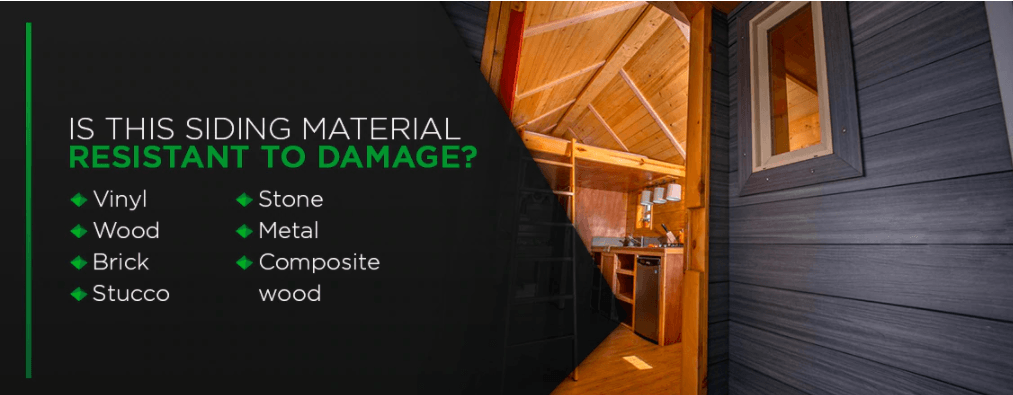
The main purpose of exterior siding is to protect your house from moisture damage. Here are the potential hazards and resistance capabilities of the various siding materials:
- Vinyl: Vinyl siding is resistant to insect damage. Improper installation of vinyl siding could lead to moisture damage. It also can’t tolerate high levels of sunlight.
- Wood: Certain species of wood are resistant to decay. Wood siding is prone to insect and water damage.
- Brick: Brick is resistant to fire, ants and termites. It’s also resistant to noise pollution outside of the home.
- Stucco: Stucco is resistant to rot or insect damage. It’s also quick drying in areas with heavy rainfall. Old stucco could crack, which could allow moisture into the home.
- Stone: Stone is impenetrable to any damage. It’s resistant to extreme temperatures, fire, insects and moisture.
- Metal: Metal cannot rot or warp due to moisture damage like other materials. Steel siding is resistant to hail and other harsh precipitation. Keep in mind that excess moisture will cause rust.
- Composite wood: Composite wood siding is resistant to stains and pests as well as decay, water damage and fire.
2. Is This Siding Material Energy-Efficient?
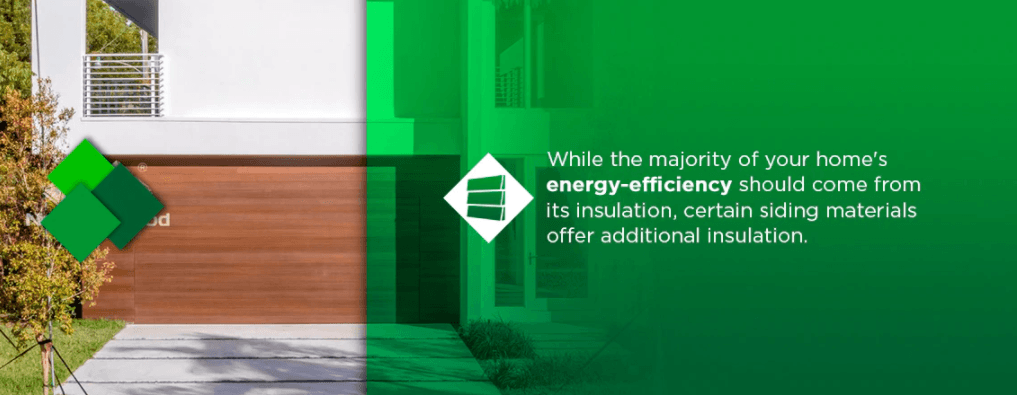
While the majority of your home’s energy-efficiency should come from its insulation, certain siding materials offer additional insulation. These siding materials are the most energy-efficient:
- Insulated vinyl: Insulated vinyl siding panels contain an ESP core that acts as a cushion for the interior of your home.
- Wood: Wood siding is naturally energy-efficient without additional insulation.
- Brick: You could increase the insulation of brick by adding a spray foam.
- Stucco: You could add more insulation to stucco with a thin layer of rigid foam.
- Stone: Certain types of stone are natural insulators. You could install extra insulation in the stone lining.
- Insulated steel or aluminum: You could add ESP core insulation to metal siding to increase its energy-efficiency.
- Composite wood: Composite wood siding inherits the energy-efficiency of wood, even without insulation. It’s made of strong wood that can guard against weather coming into the home.
3. How Will This Siding Material Make My Home Look?
When you think about the way you want your house to look, these materials provide different aesthetics to accommodate your home’s style:
- Vinyl: Vinyl siding might be a familiar appearance for houses in your neighborhood. It could lose its color, and it can often look cheap. It’s also prone to cracking under stress.
- Wood: Wood siding has a natural beauty that grounds you and provides a sense of security. Over time, it could lose its color or start to rot.
- Brick: Brick will maintain its timeless, historic appearance for centuries.
- Stucco: Stucco is a popular coastal siding material. Weathering, cracks and discoloration are more obvious on stucco.
- Stone: The look of a stone house is one of luxury that will last for centuries.
- Metal: Metal gives your home a modern look that won’t lose its color like other types of material. Keep in mind that it’s prone to dents and rust.
- Composite wood: Composite wood siding has the beautiful look of natural wood. Unlike natural wood, it doesn’t lose its color or integrity.
4. How Eco-Friendly Is the Siding Material?
The eco-friendliness of a siding material depends on the availability of the material and how it’s manufactured. Here is the econ-friendliness of each type of material:
- Vinyl: The material is manufactured, so it doesn’t use renewable materials. The way it’s manufactured emits fossil fuels into the environment.
- Wood: Wood is eco-friendly because you can replace one panel instead of all your siding. It’s also made from all-natural, renewable materials.
- Brick: Brick is a natural resource that won’t need to be replaced for a long time. However, the manufacturing of brick releases harmful emissions into the air.
- Stucco: Stucco isn’t considered eco-friendly because it’s not a natural resource.
- Stone: Like brick, stone is also a natural resource. The way that manufacturers retrieve stone could be harmful to the environment.
- Metal: Metal is eco-friendly because it doesn’t create a lot of waste material. It can be made from recycled materials, which eliminates waste.
- Composite wood: Manufacturers create composite wood from recycled materials. They also use less waste to make composite wood siding material.
5. Does This Siding Material Fit in My Budget?
These siding materials can accommodate the average homeowner’s budget:
- Vinyl: Vinyl siding is cost-effective because of its availability and versatility. Insulated vinyl siding will cost more money.
- Wood: Wood may cost less money up front, but will cost money to maintain. It will also give your home a higher resale value.
- Brick: Brick has a higher upfront cost because of its difficult installation process. Because brick is fire resistant, your home insurance premium may decrease.
- Stucco: You can replace stucco at a minimal cost. It also costs less money to maintain over the years.
- Stone: Stone is difficult to install, which drives up the price of installation. It’s not expensive to maintain, so the installation cost may pay for itself.
- Metal: Steel siding is heavy, so it’s more expensive to install.
- Composite wood: Composite wood is one of the most affordable options for siding materials.
What is the most durable siding?
The best type of house siding is a material that’s durable. The durability of a siding material depends on its resistance to outside damage.
- Vinyl siding: Vinyl siding looks the same with minimal maintenance. Vinyl siding looks fine without the need for repainting but will lose its color when exposed to direct sunlight. To maintain vinyl siding, use a garden hose to rinse off any dirt or debris. Vinyl siding performs better in a climate with moderate temperatures. When you clean it every couple of years, vinyl lasts longer. Vinyl siding is resistant to bugs, mold and extreme temperatures.
- Wood siding: Wood performs better in dry climates. To prolong the life of your wood siding, you have to maintain it regularly. Wood siding is the most high-maintenance type of siding. You have to inspect it often for mold, rot and discoloration. You also have to repaint and refinish it every few years to maintain the wood’s color.
- Brick siding: Bricks have been used for hundreds of years on both residential and commercial buildings. We know that brick can withstand harsh weather and various climates. To maintain it, all you have to do is clean the mortar occasionally.
- Stucco siding: If you place stucco siding on a stone wall, it will last longer than if on a wood frame wall. As long as there are no cracks on the stucco siding, it’s fire and moisture resistant. To prolong the life of stucco siding, you will need to wash it to prevent dirt and debris buildup.
- Stone siding: Stone siding is the most durable option for your home. It’s resistant to moisture, insect and weather damage. It’s also fire-resistant.
- Metal siding: Metal siding can resist hail and weather damage. Steel is a durable material for your siding, resisting fire and insect damage. Certain types of metal are very sensitive to moisture and denting.
- Composite wood siding: Composite wood siding is extremely durable and requires minimal maintenance. It keeps its color and is resistant to cracking, rot, mold, insects, fire and moisture. Composite wood lasts longer when cleaned with mild soap and water annually.
House siding options and costs
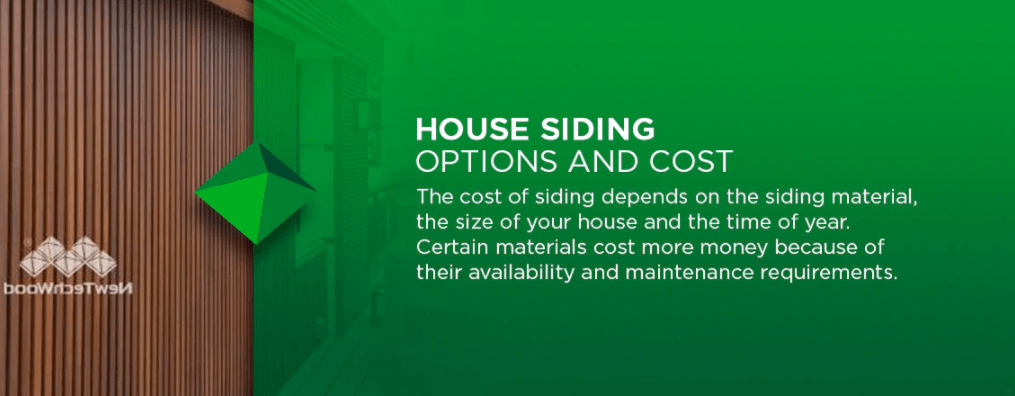
The cost of siding depends on the siding material, the size of your house and the time of year. Certain materials cost more money because of their availability and maintenance requirements. You should replace your siding before the cold winter winds arrive. Manufacturers may charge you more money if you need an emergency siding replacement. Here are the estimated cost ranges per square foot of the various types of siding material, including the cost of labor and materials:
- Vinyl: $3-$11
- Brick: $7-$15
- Stucco: $4-$8
- Natural stone: $17-$30
- Aluminum: $3-$11
- Composite wood: $2-$4
Composite wood is one of the most affordable residential siding materials. It’s easy to install, so professionals charge less money to apply it to your home. Composite wood siding is also made from inexpensive materials. Since this material is energy-efficient, it will also provide you with savings on your energy bill in the long run.
Find the best siding with NewTechWood

Our composite wood siding at NewTechWood is easy to install on your home. We use green, eco-friendly technology to make our UltraShield® wood panel siding. We also offer a variety of accessories and hardware to make your composite siding installation a success. We supply our products at competitive rates compared to other composite wood manufacturers. To order your siding material, find a NewTechWood distributor near you. You could also contact us by filling out a contact form or calling 1-866-728-5273.



